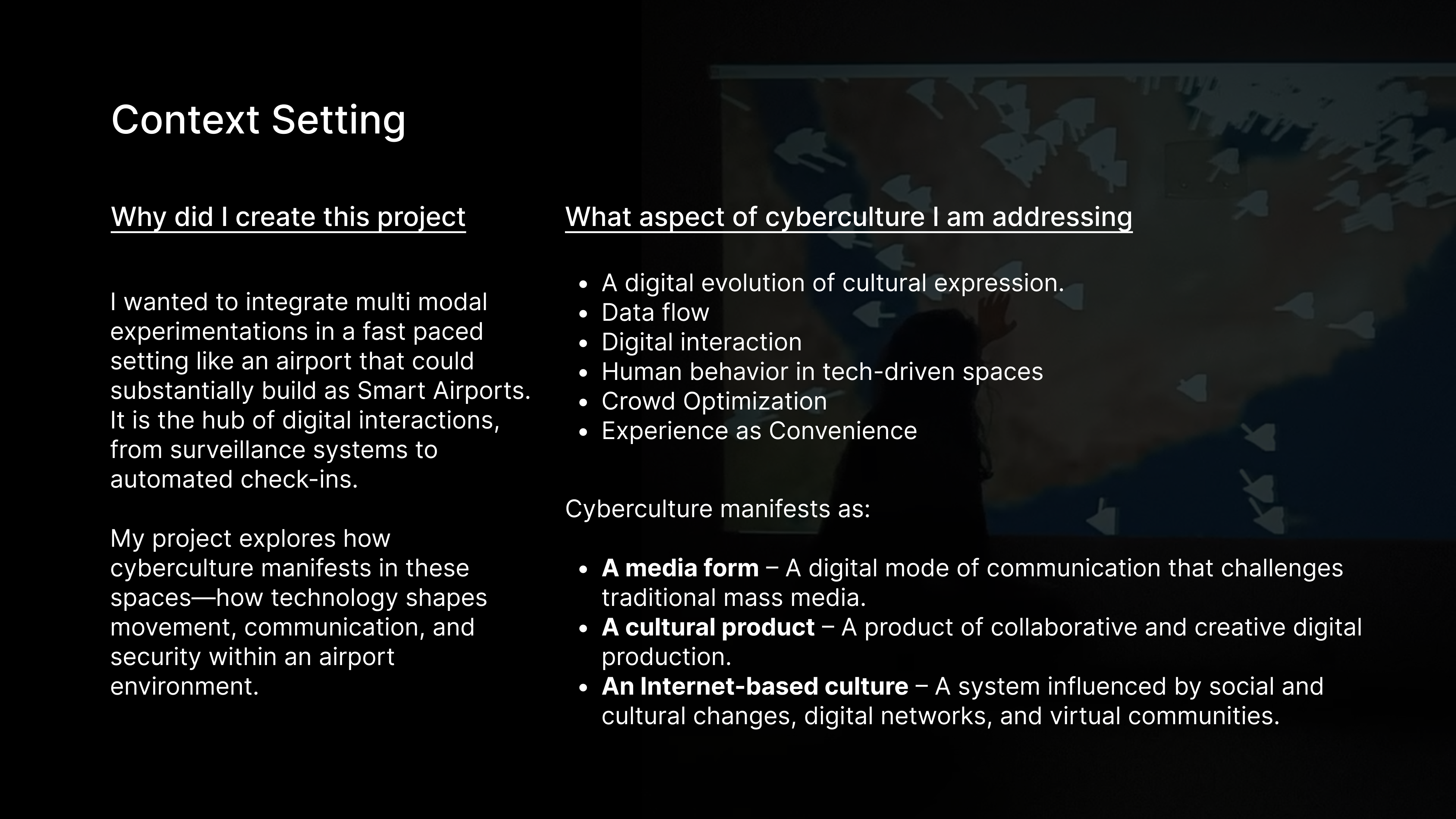



Secondary Research
![]()
![]()
![]()
![]()
![]()
![]()
![]()
![]()
![]()
![]()
Concept Maps
![]()
![]()
![]()
Slide to view more
![]()
![]()
![]()
![]()
![]()
Data Simulation of live Flight Tracking to be projected in airports
A projected installation with physical poles and circular floor projections enhances crowd optimization in airports, reducing disorientation and anxiety during delays or disruptions. The poles serve as landmarks for queue management, while projected circles act as tangible boundaries, dynamically adjusted using a MIDI keyboard to guide passenger movement.
Color-coded projections (red, yellow, green) indicate crowd density, ensuring passengers can reorient themselves and avoid congestion. By improving flow, monitoring occupancy, and creating organized spaces, this system fosters safety, efficiency, and comfort, providing a structured social context within tangible bounds.
![]()
![]()
Widgets enhance the travel experience by providing quick, convenient access to essential information and services. With user-friendly interfaces, passengers can easily receive real-time flight updates, gate changes, baggage details, and personalized notifications on their devices, ensuring seamless and informed decision-making.
Interactive wayfinding widgets also offer guidance on airport amenities, dining, shopping, and time management, streamlining navigation for a hassle-free journey to your destination.
![]()
![]()
![]()
![]()
![]()
![]()
![]()
Concept Maps
![]()
![]()
Widget Board
![]()
![]()
![]()
![]()
Prototype Shots
![]()
![]()








Narrowing Outcomes
My aim was to rekindle a sense of wonder through technology, foster engagement with tools, and manage evolving expectations. Viewing the airport as the interface between passengers and airlines, I recognized that airline customers inherently become the airport's customers. I explored the innovative applications of new media in visual communication, focusing on visual expression through information technology (IT), flexible layouts, diverse transmission modes, and interactive integration.
The Micro-Outputs of this project include AI widgets, Flight Tracker installation, Multimedia kiosks, and Hologram signage. Together, these elements embody cyberculture principles by leveraging the internet and data as technology, introducing creative and collaborative tools, shaping new social contexts, and serving as mediums of communication.
The Micro-Outputs of this project include AI widgets, Flight Tracker installation, Multimedia kiosks, and Hologram signage. Together, these elements embody cyberculture principles by leveraging the internet and data as technology, introducing creative and collaborative tools, shaping new social contexts, and serving as mediums of communication.


Concept Maps



Outcome 1 : Flight Tracker Visualizer
Slide to view more


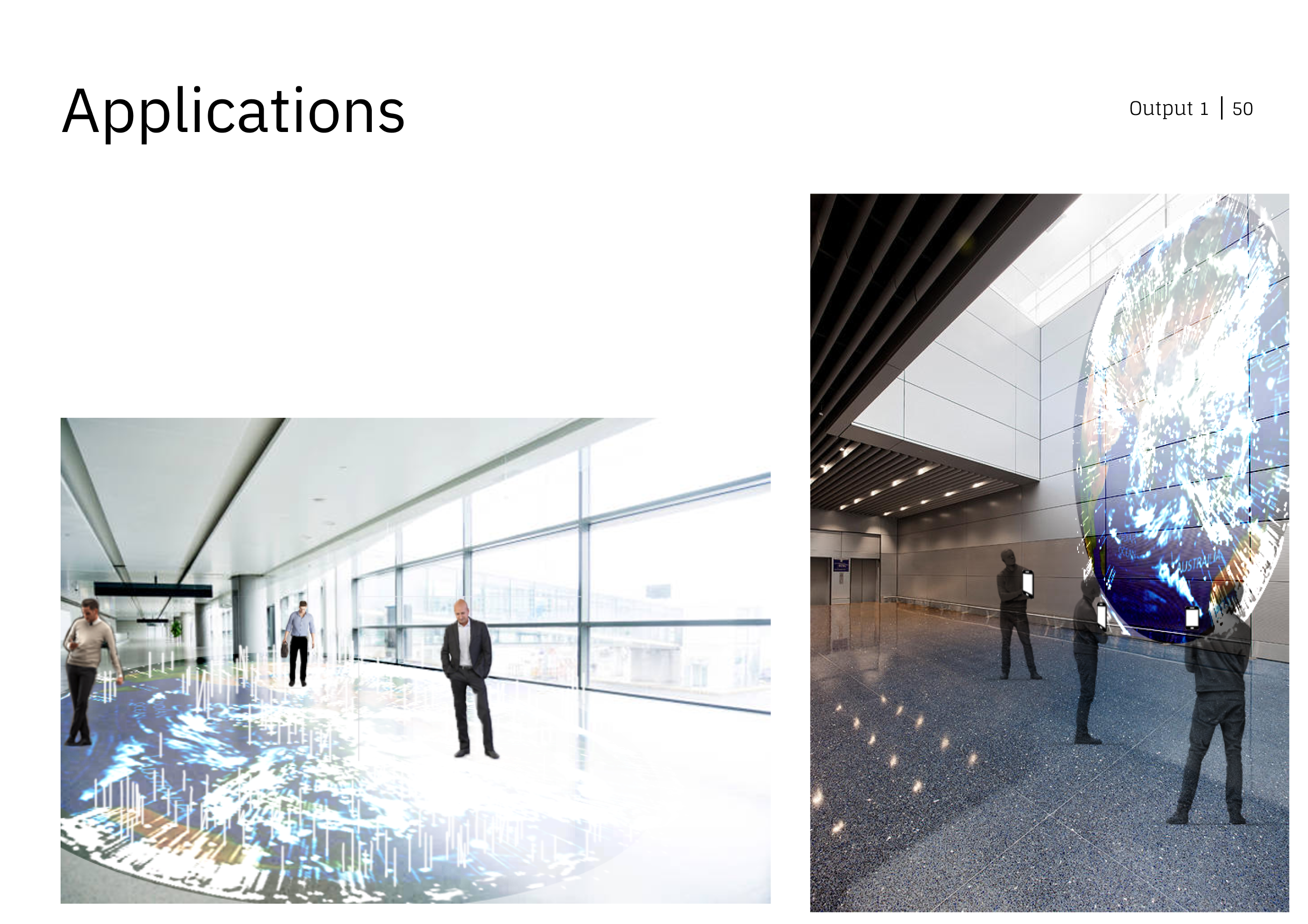

Data Simulation of live Flight Tracking to be projected in airports
Outcome 2 : Crowd Circles
A projected installation with physical poles and circular floor projections enhances crowd optimization in airports, reducing disorientation and anxiety during delays or disruptions. The poles serve as landmarks for queue management, while projected circles act as tangible boundaries, dynamically adjusted using a MIDI keyboard to guide passenger movement.
Color-coded projections (red, yellow, green) indicate crowd density, ensuring passengers can reorient themselves and avoid congestion. By improving flow, monitoring occupancy, and creating organized spaces, this system fosters safety, efficiency, and comfort, providing a structured social context within tangible bounds.

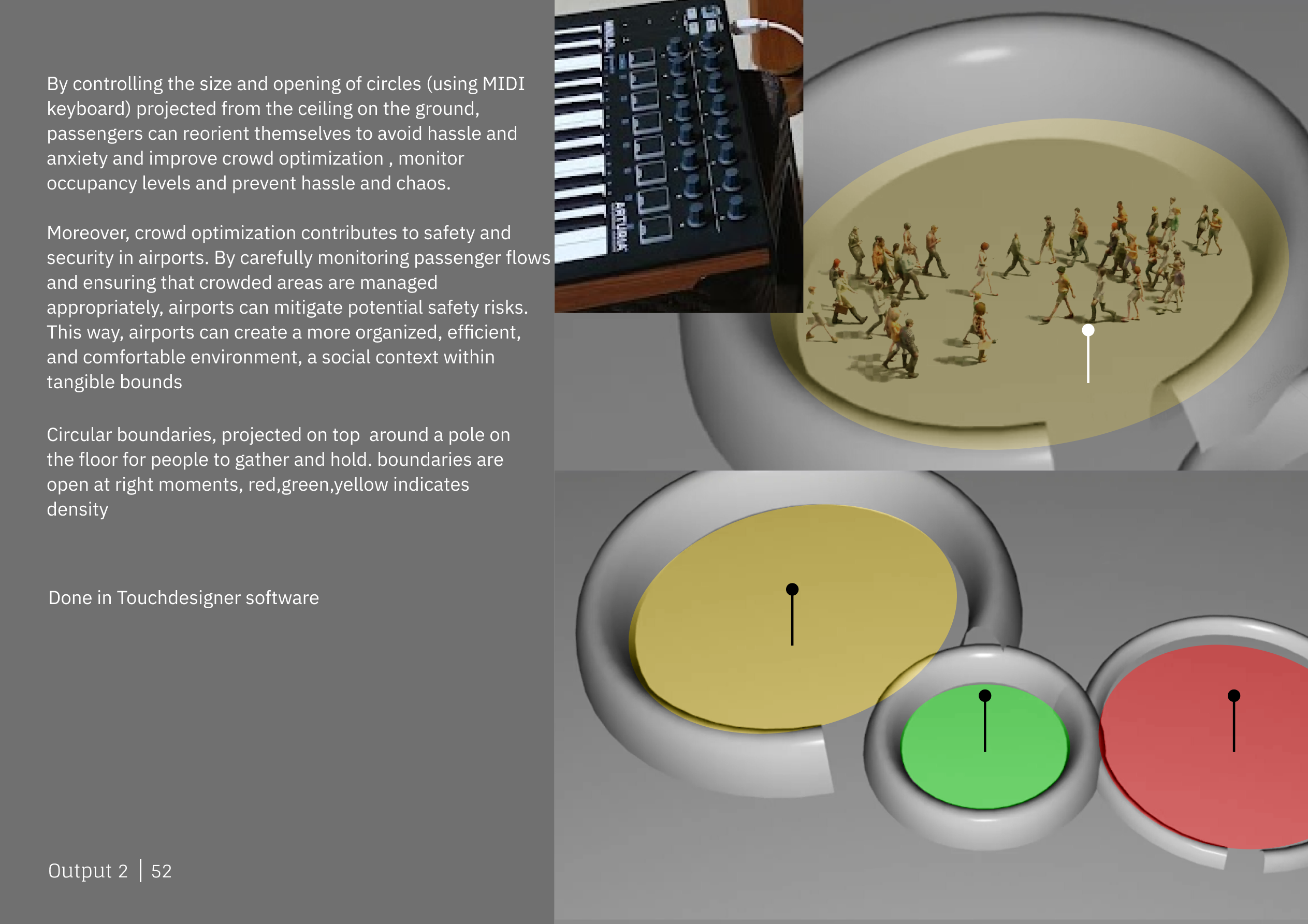
Outcome 3 : Air Widgets
Widgets enhance the travel experience by providing quick, convenient access to essential information and services. With user-friendly interfaces, passengers can easily receive real-time flight updates, gate changes, baggage details, and personalized notifications on their devices, ensuring seamless and informed decision-making.
Interactive wayfinding widgets also offer guidance on airport amenities, dining, shopping, and time management, streamlining navigation for a hassle-free journey to your destination.
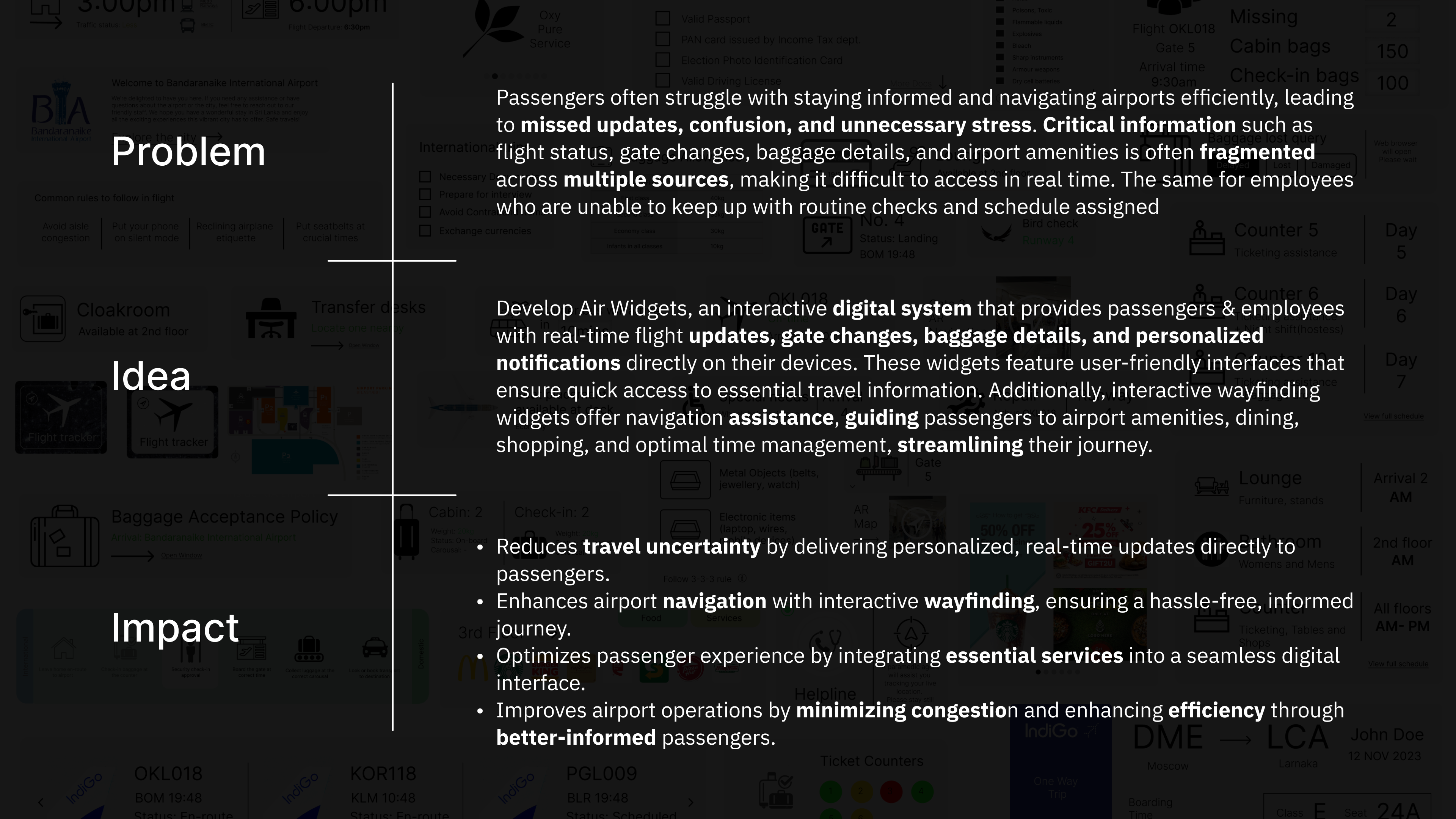


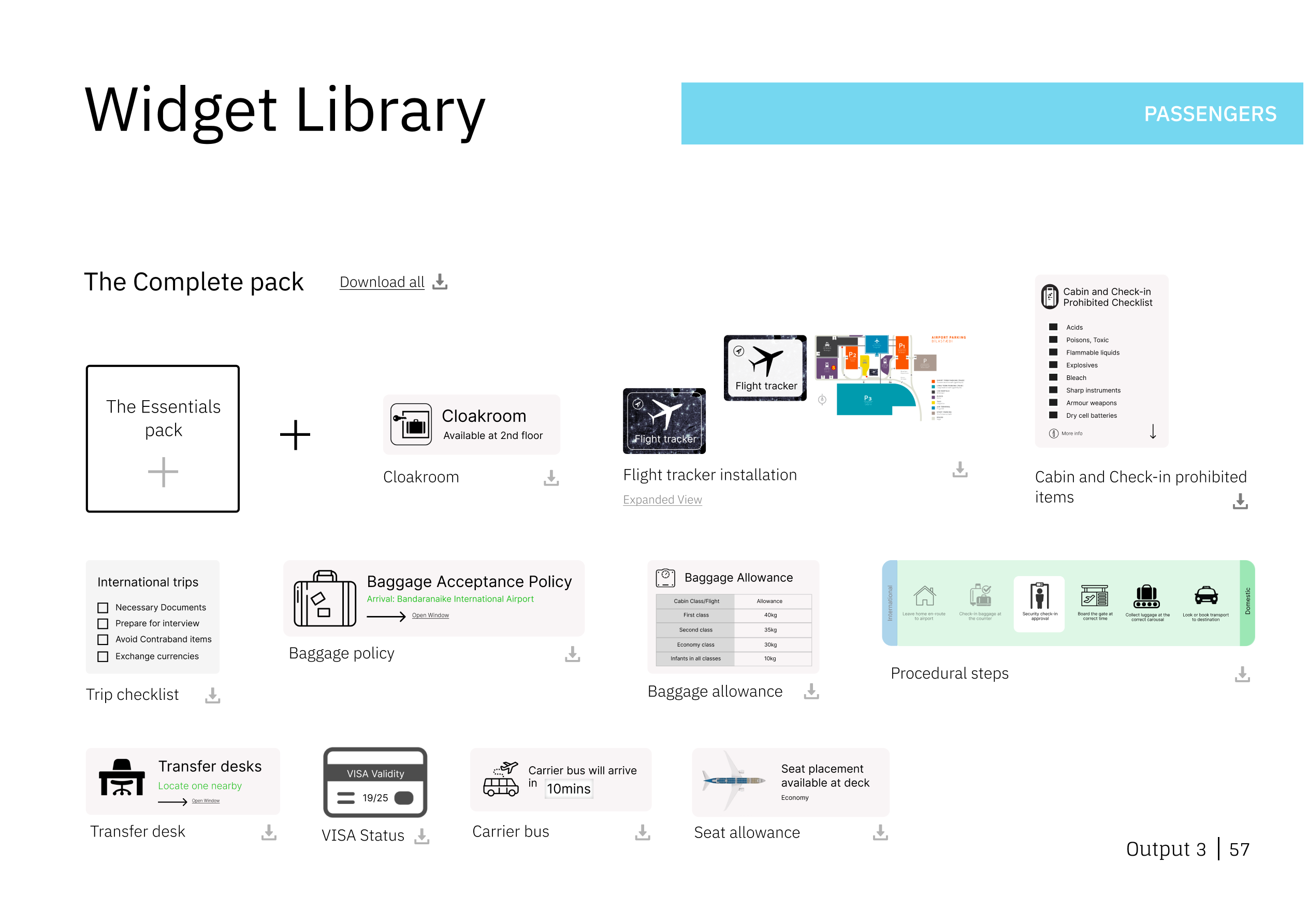
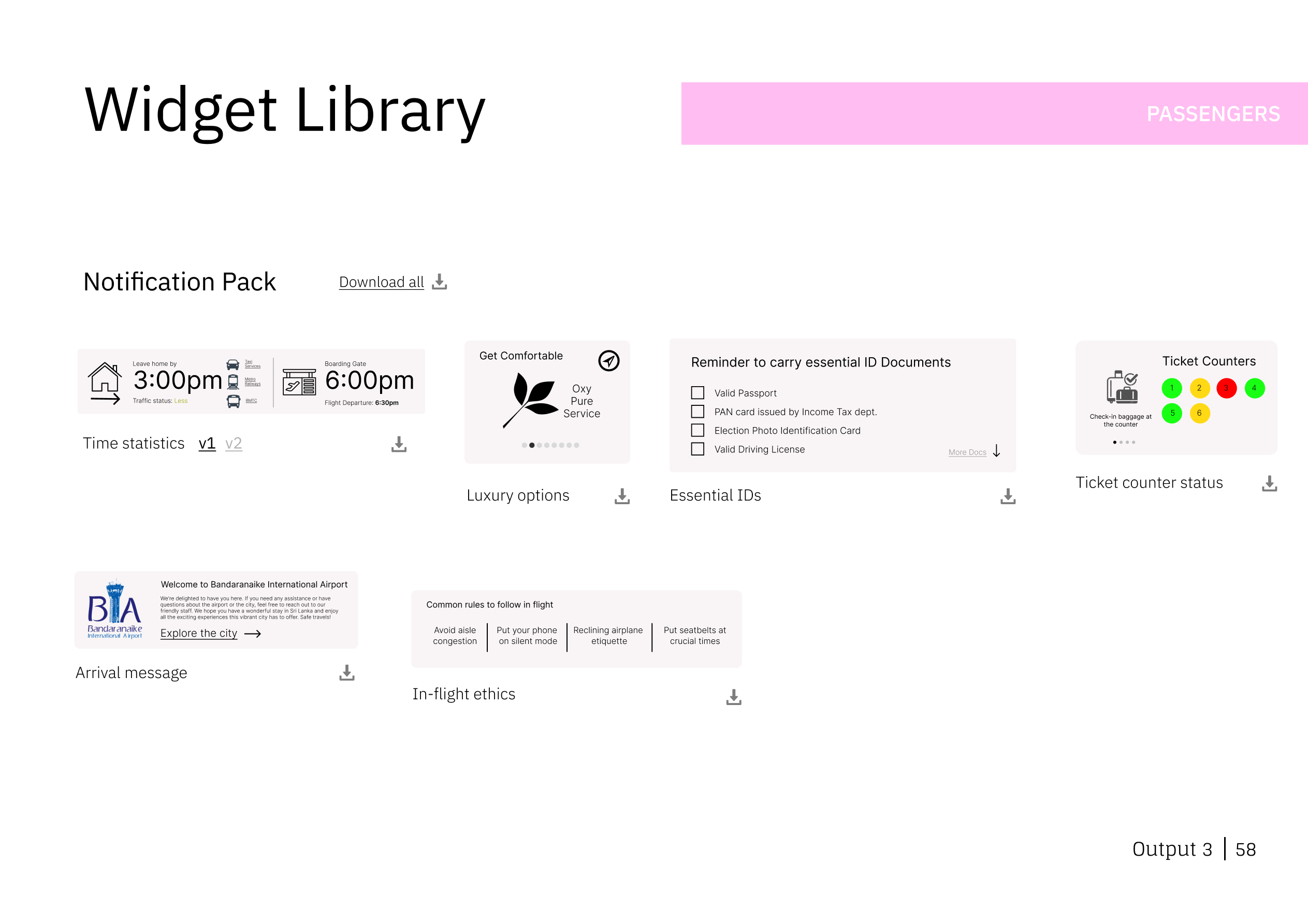
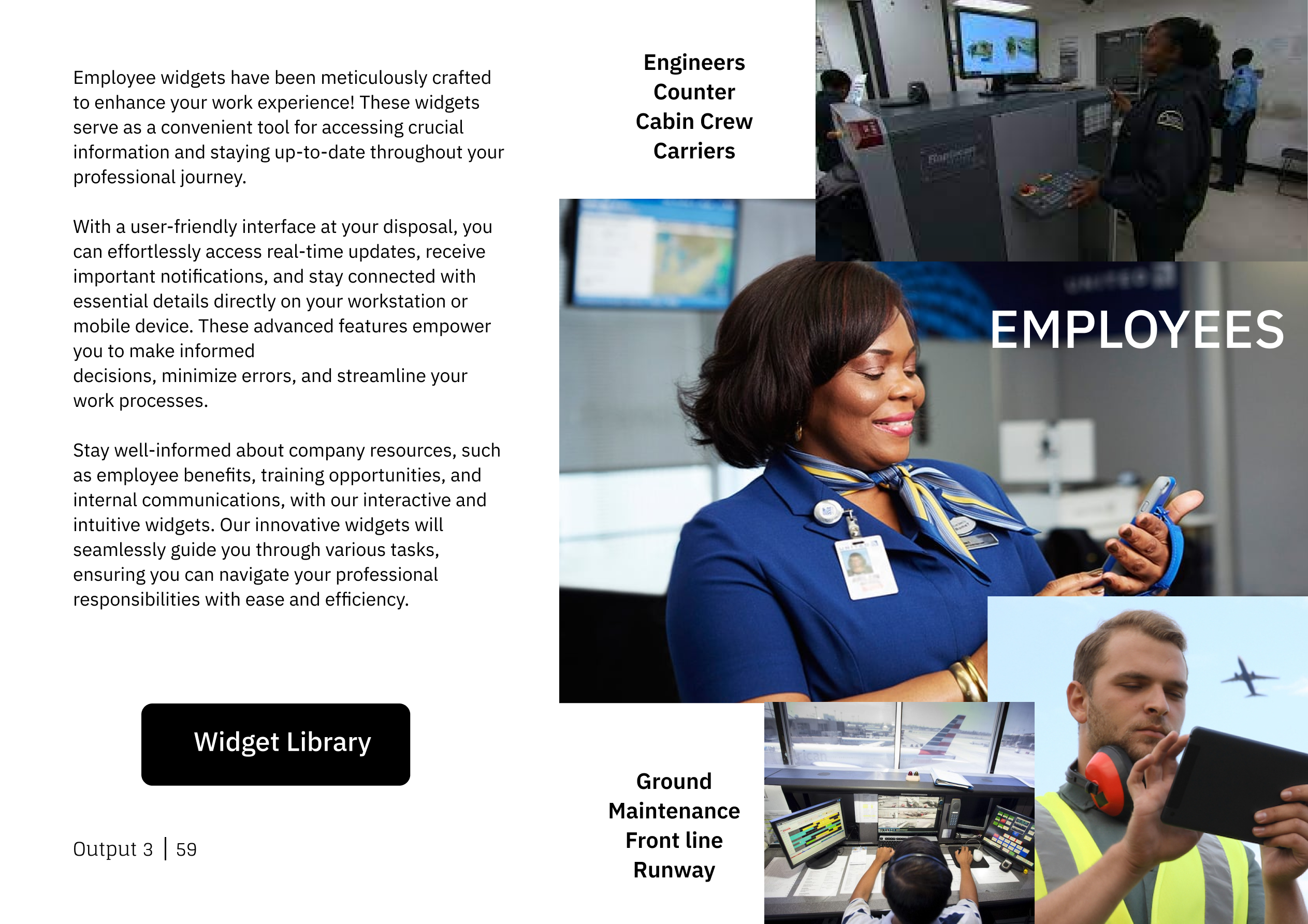
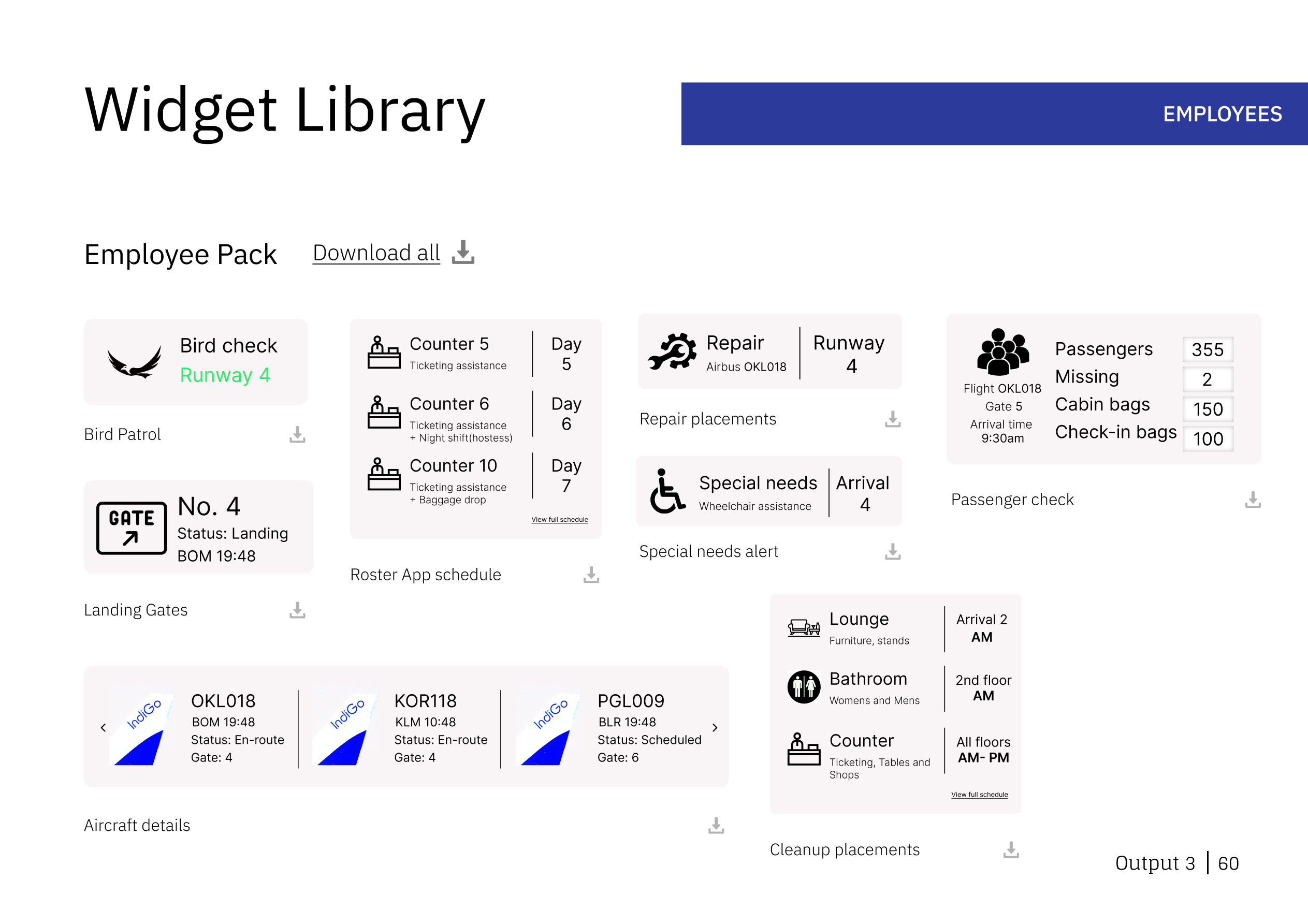
Concept Maps


Widget Board
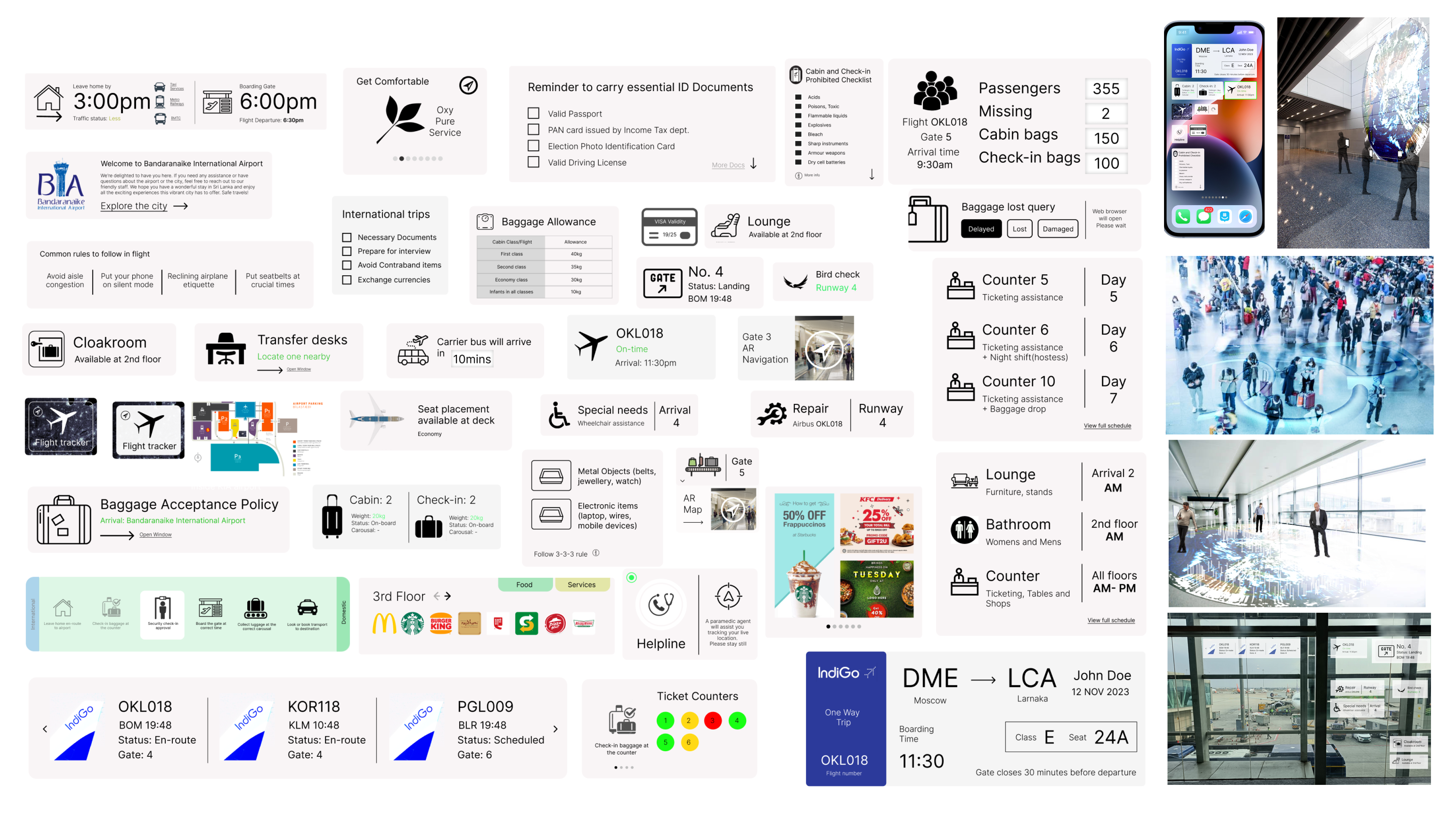



Prototype Shots


AI Widgets
![]()
![]()
![]()
Sample Interface
![]()
![]()
![]()



Sample Interface

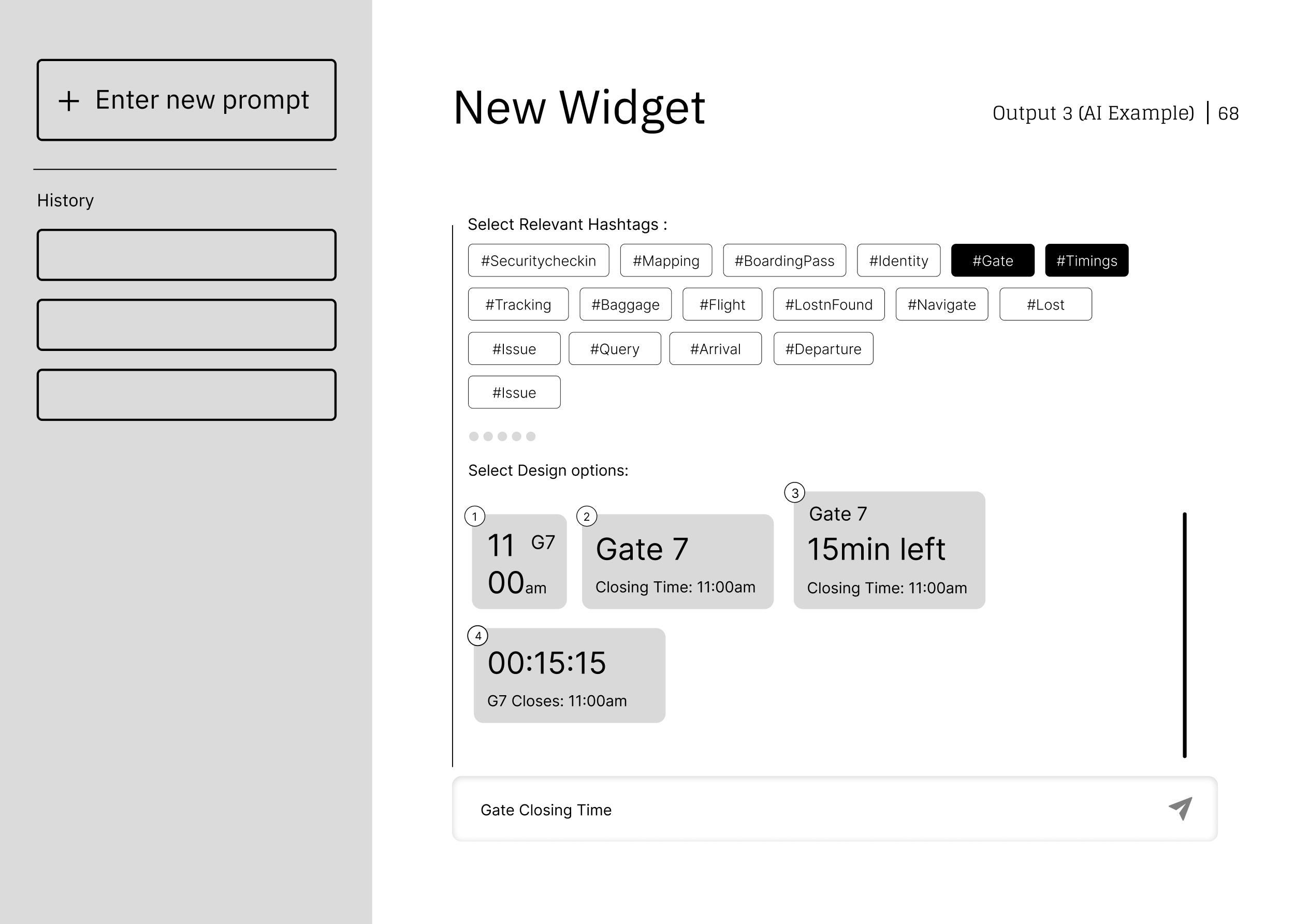

Usability Test & Responses
![]()
![]()
![]()
![]()
Future Goal: I aim to create more functional prototypes and secure permissions to implement installations at airports. This project deepened my understanding of technology’s potential and its role in creating meaningful experiences, a perspective I intend to carry forward in future projects.
2023




Key Learnings and Reflections
- Exploration and Ambition: Th project pushed me to explore new communication mediums and manage time effectively within a tight timeline. While ambitious, narrowing focus was challenging due to diverse opportunities and technologies.
- Context and Direction: Confidently selecting new media and airports allowed experimentation with systems and cyberculture, though integrating outputs with context required substantial ideation and iteration.
- Challenges and Growth: Conducting surveys and interviews onsite was outside my comfort zone but essential. Multiple prototypes were necessary to achieve project goals despite calls to simplify.
- Technology and Testing: Exploring tools helped shape outputs, and testing validated learnability and proof of concept, creating a wholesome, impactful project.
Future Goal: I aim to create more functional prototypes and secure permissions to implement installations at airports. This project deepened my understanding of technology’s potential and its role in creating meaningful experiences, a perspective I intend to carry forward in future projects.
2023


